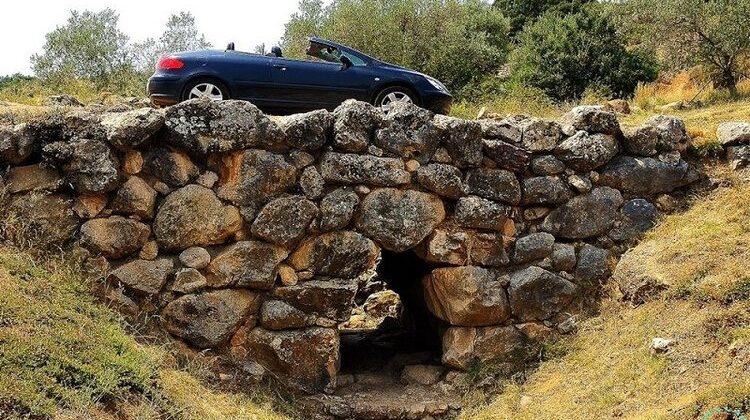
Some of the earliest bridges in the world are thought to be four Mycenaean corbel arch structures that may be found close to the Greek villages of Mycenae and Arkadiko. At least two of them have been in use for at least 3,000 years.

All of the bridges share a common design and are from the same region of Greece during the Bronze Age, connecting Mycenae, Tiryns, Tolo, and Epidaurus. The earliest arch bridges remaining in use, they were constructed between 1300 and 1190 BCE. (A bridge crossing an antiquated stream was only recently discovered to be the 4,000-year-old Bridge of Girsu in Iraq. The Mycenaean bridges were thought to be the world’s oldest bridges up until that point.
The highway and the bridges were a part of a broader military road network and were constructed using huge uneven limestone slabs. Additionally, those bridges were made to last. The Arkadiko Bridge and the Petrogephyri Bridge are still in use for local agricultural purposes.

Like the previous bridges, Arkadiko Bridge was constructed using Cyclopean masonry, which involves carefully fitting small stones, limestone boulders, and tile pieces without the use of cement. It is 18 feet in width, 72 feet in length, and 13 feet in height.
The historic bridge is still safe for pedestrian traffic, and occasionally locals use it. But it wasn’t the original intent. Archaeologists have determined that the bridge was made expressly for chariots based on its architectural design. Even the curbs that were supposed to direct the horse-drawn carriages are still present. Yes, even a modern chariot can still be supported by it.

One kilometre to the west of Arkadiko Bridge, Petrogephyri Bridge, the other historic bridge still in operation, spans the same creek. This structure resembles the latter in terms of size and style, but it has a wider span and a slightly taller vault.
In the surrounding area, at Lykotroupi in northern Argolis, along another Mycenaean main road, there is a fifth, well-preserved Mycenaean bridge. With dimensions of 5.20 metres (17.1 feet) wide at the bottom, 2.40 metres (7 ft 10 inches) at the top, and a corbelled arch span of just over a metre, it is quite similar in size to Arkadiko Bridge. There are still curbs on that route for chariots to be guided by.

The history of mankind includes both the two still-standing bridges as well as their relics. Despite this, none of them have up until now been properly described or displayed. In terms of construction, one of the bridges is in danger, so archaeologists are encouraging the adoption of safety precautions.








 Photographer Finds Locations Of 1960s Postcards To See How They Look Today, And The Difference Is Unbelievable
Photographer Finds Locations Of 1960s Postcards To See How They Look Today, And The Difference Is Unbelievable  Hij zet 3 IKEA kastjes tegen elkaar aan en maakt dit voor zijn vrouw…Wat een gaaf resultaat!!
Hij zet 3 IKEA kastjes tegen elkaar aan en maakt dit voor zijn vrouw…Wat een gaaf resultaat!!  Scientists Discover 512-Year-Old Shark, Which Would Be The Oldest Living Vertebrate On The Planet
Scientists Discover 512-Year-Old Shark, Which Would Be The Oldest Living Vertebrate On The Planet  Hus til salg er kun 22 kvadratmeter – men vent til du ser det indvendigt
Hus til salg er kun 22 kvadratmeter – men vent til du ser det indvendigt  Superknepet – så blir snuskiga ugnsformen som ny igen!
Superknepet – så blir snuskiga ugnsformen som ny igen!  Meteorite That Recently Fell in Somalia Turns Out to Contain Two Minerals Never Before Seen on Earth
Meteorite That Recently Fell in Somalia Turns Out to Contain Two Minerals Never Before Seen on Earth  Nearly Frozen Waves Captured On Camera By Nantucket Photographer
Nearly Frozen Waves Captured On Camera By Nantucket Photographer  It’s Official: Astronomers Have Discovered another Earth
It’s Official: Astronomers Have Discovered another Earth 